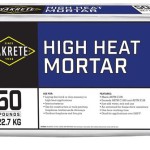Enhancing Your Hearth: A Comprehensive Guide to Stone Fireplace Tile
Stone fireplace tile offers a timeless and sophisticated aesthetic for any home. Beyond its visual appeal, it provides a durable and heat-resistant surface that protects the surrounding structure from the intense heat of a fire. Selecting the right stone tile requires careful consideration of factors such as the type of stone, size, color, texture, and installation method. This article provides a detailed overview of stone fireplace tiles, covering various aspects relevant to homeowners and design professionals.
Understanding the Benefits of Stone Fireplace Tile
Stone is a naturally occurring material renowned for its strength and longevity. When used as fireplace tile, it offers several distinct advantages. Firstly, stone is inherently fire resistant, making it an ideal choice for areas exposed to high temperatures. Unlike other materials that can warp, melt, or combust, stone can withstand extreme heat without compromising its structural integrity. This inherent fire resistance significantly enhances the safety of the fireplace and the surrounding home.
Secondly, stone tile offers excellent thermal mass. This means it can absorb and store heat, gradually releasing it back into the room even after the fire has died down. This radiant heat creates a comfortable and energy-efficient heating solution, reducing the reliance on other heating systems and potentially lowering energy bills. The thermal mass properties vary depending on the type of stone, with denser stones like granite generally providing more efficient heat retention.
Thirdly, stone tile is a visually versatile material that can complement a wide range of architectural styles. From rustic and traditional to modern and contemporary, there is a stone tile option to suit virtually any design aesthetic. The natural variations in color, pattern, and texture inherent in stone add character and depth to the fireplace, creating a unique focal point in the room. The wide array of available stone types, each with its distinctive characteristics, allows for further customization and personalization.
Finally, stone tile is a durable and low-maintenance material that can withstand years of use without significant wear and tear. When properly sealed and maintained, stone tile is resistant to stains, scratches, and fading. Regular cleaning with a mild detergent and water is typically sufficient to keep stone tile looking its best. This durability and ease of maintenance make stone tile a practical and cost-effective choice for fireplace surrounds.
Exploring Different Types of Stone Tile for Fireplaces
The selection of stone fireplace tile is extensive, encompassing various types of natural stone, each with its unique characteristics and aesthetic appeal. Understanding the properties of each stone type is crucial for making an informed decision that aligns with the desired design and functional requirements.
Granite is a hard, igneous rock known for its durability and resistance to heat, scratches, and stains. It is available in a wide range of colors and patterns, making it a versatile choice for various architectural styles. Granite is a relatively dense stone, providing excellent thermal mass for radiant heat. Its polished finish creates a sleek and modern look, while honed or textured finishes offer a more rustic aesthetic.
Marble is a metamorphic rock prized for its elegant veining and luxurious appearance. It is available in a variety of colors, including white, black, green, and gray. While marble is a relatively soft stone compared to granite, it is still suitable for fireplace surrounds, particularly in areas that are not directly exposed to intense heat. Marble requires sealing to protect it from stains and etching, and it is best suited for decorative fireplace surrounds rather than those used for frequent, high-heat fires.
Slate is a fine-grained, metamorphic rock known for its natural cleft texture and muted colors. It is a durable and heat-resistant stone that is commonly used for fireplace surrounds. Slate offers a rustic and earthy aesthetic that complements a variety of architectural styles. Its natural cleft texture provides a non-slip surface, making it a safe choice for hearths and walkways around the fireplace.
Limestone is a sedimentary rock characterized by its soft, earthy tones and natural variations. It is a relatively porous stone that requires sealing to protect it from stains and moisture. Limestone offers a warm and inviting aesthetic that complements traditional and transitional design styles. It is less durable than granite or slate and is best suited for decorative fireplace surrounds rather than those used for frequent, high-heat fires.
Travertine is a type of limestone characterized by its distinctive pitted surface. It is available in a range of colors, including beige, cream, and brown. Travertine offers a rustic and textured look that complements a variety of architectural styles. Like limestone, it requires sealing to protect it from stains and moisture. The unfilled holes in travertine provide a unique visual appeal but can also trap dirt and debris, requiring more frequent cleaning.
Stacked Stone is composed of individual pieces of natural stone adhered together to create a textured, three-dimensional appearance. This type of tile provides a rustic and visually striking aesthetic. Stacked stone is available in a variety of stone types, including slate, quartzite, and sandstone. The irregular shapes and textures of stacked stone add depth and character to the fireplace surround.
Key Considerations for Stone Fireplace Tile Installation
Proper installation is crucial for ensuring the longevity and performance of stone fireplace tile. The installation process involves several key steps, including surface preparation, mortar selection, tile layout, cutting and setting tiles, grouting, and sealing.
Surface Preparation is a critical first step. The substrate, or the surface to which the tile will be applied, must be clean, level, and structurally sound. Any existing paint, wallpaper, or debris must be removed. If the substrate is uneven, it may need to be leveled with a self-leveling compound or a mortar bed. A cement backer board is often recommended for wood frame construction to provide a stable and moisture-resistant surface for the tile.
Mortar Selection is equally important. The type of mortar used should be specifically designed for stone tile and suitable for the substrate. Thin-set mortar is commonly used for installing stone tile over cement backer board or concrete. The manufacturer's instructions should be carefully followed to ensure proper mixing and application. A notched trowel is used to apply the mortar evenly to the substrate, creating ridges that provide a strong bond between the tile and the surface.
Tile Layout should be planned carefully before the tiles are set. This involves determining the starting point, the spacing between tiles (using spacers), and the alignment of the tiles. It is often helpful to dry-lay the tiles on the floor to visualize the final layout and make any necessary adjustments. The layout should consider the size and shape of the fireplace surround and any architectural features that may affect the tile placement.
Cutting and Setting Tiles requires precision and skill. A wet saw is typically used to cut stone tiles to the desired size and shape. When cutting, it is important to wear safety glasses and ear protection. The cut edges of the tiles should be smooth and clean. The tiles are then pressed firmly into the mortar bed, ensuring full contact and proper alignment. Spacers are used to maintain consistent grout lines, creating a uniform and professional look.
Grouting fills the spaces between the tiles, providing a watertight seal and enhancing the overall appearance. The grout should be selected to complement the color of the stone tile and the desired aesthetic. The grout is applied using a grout float, pressing it firmly into the grout lines. Excess grout is then wiped away with a damp sponge. After the grout has cured, it should be sealed to protect it from stains and moisture.
Sealing is a crucial step that protects the stone tile from stains, moisture, and other damage. A penetrating sealer is typically used to seal stone tile. The sealer penetrates the pores of the stone, creating a protective barrier that repels liquids and prevents stains from setting in. The sealer should be applied according to the manufacturer's instructions, ensuring thorough coverage. Periodic resealing may be necessary to maintain the protection.
In summary, stone fireplace tile offers a durable, aesthetically pleasing, and fire-resistant solution for enhancing any hearth. Careful consideration of the stone type, design, and installation process will ensure a beautiful and functional fireplace surround that lasts for years to come. Consulting with a qualified tile contractor is recommended to ensure proper installation and optimal performance.

Fireplace Stone Tile Remodel

Is A Cozy Stacked Stone Fireplace Your Next Dream Project
Fireplace Feature Wall Ideas Queen City Stone Tile

Fireplace Tile Ideas For Homeowners Ready A Redesign

4 Natural Stacked Stone Fireplaces For Your Dream Design

Tile Fireplaces Coco

Easy L And Stick Stone Fireplace Surround Sondra Lyn At Home

These 36 Fireplace Tile Ideas Will Inspire You 2024 Slate Stone Designs Surround

12 Stacked Stone Fireplace Ideas For Optimal Coziness

Tiletuesday Natural Stone For Your Fireplace Feat Gabriella Gomes
Related Posts








